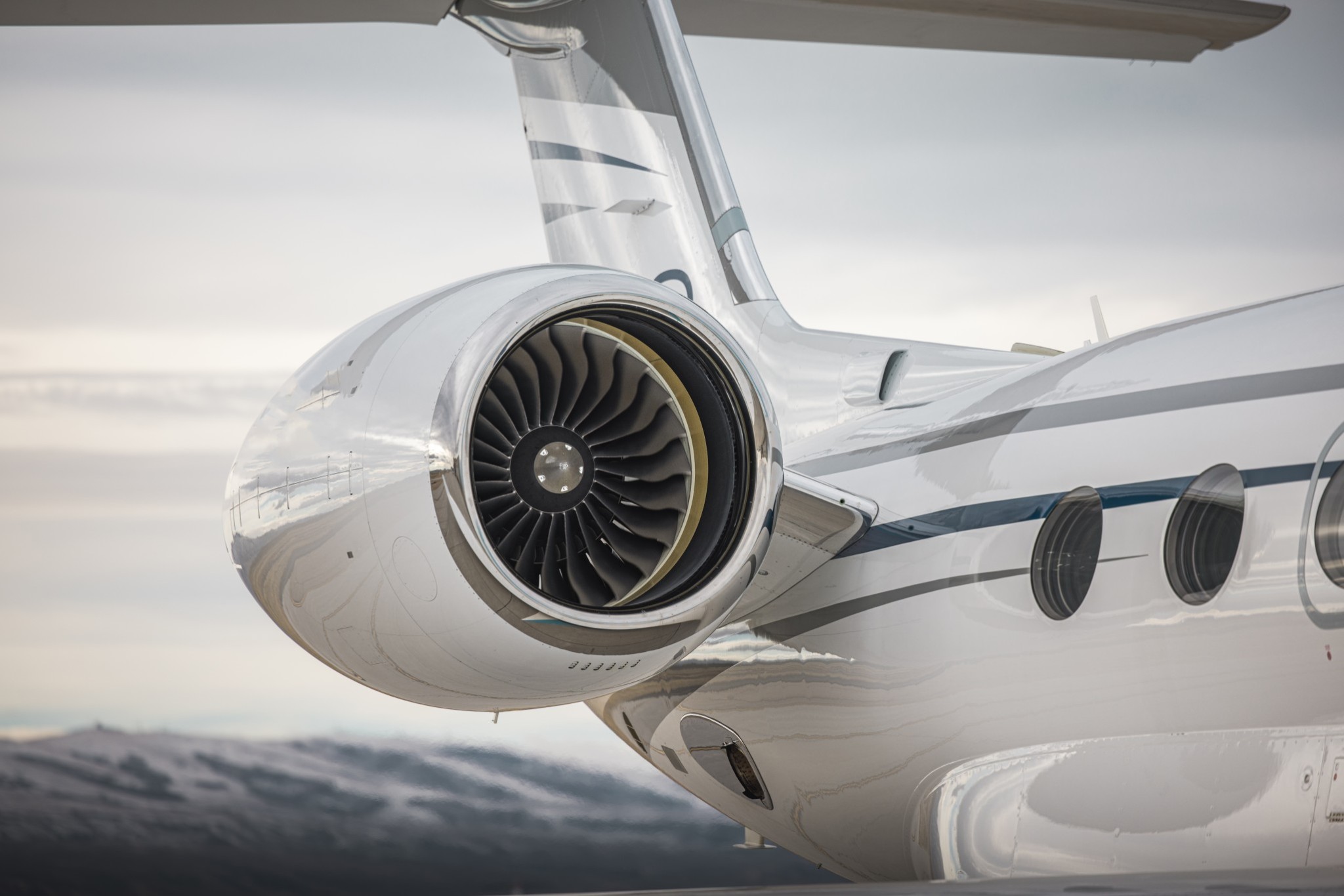
Gulfstream’s Long-Range Legacy: From G550 to G800
Date
April 25, 2025Author
Jim LewisAround the year 2000, few could have imagined an aircraft that would so thoroughly redefine long-range travel as the Gulfstream G550. When it first delivered in 2004, the industry was introduced to a true globe-spanning jet — capable of 6,750 nautical miles, offering a three-zone cabin with dedicated crew rest or a four-zone configuration that balanced speed, luxury, and efficiency in a 91,000-pound rocketship.
With only a nine-month completion cycle, standardized floorplans, and an equipment list so complete that only four options were offered, the G550 was a paradigm shift. You boarded, enjoyed dinner, watched a movie or answered emails, slept, and woke up on the other side of the planet. En route, you relaxed in a 2,000-cubic-foot cabin at a 6,000-foot cabin altitude and just 51 dB SIL sound levels — all for up to 15 hours. For over two decades and 626 deliveries, the G550 set the benchmark for long-range business travel, firmly securing Gulfstream’s position at the top of the market.
But Gulfstream wasn’t finished.
In 2004, about the time Gulfstream began the transition from Roman to Arabic numerals (a change some pilots in the business still refuse to accept) development quietly began on the next evolution: the Gulfstream G650. Bigger, faster, more efficient, and more comfortable, the G650 — and later, the G650ER — brought tangible upgrades in cabin acoustics, materials, aerodynamics, and range. With a 300 nm improvement in reach and an hour saved in cruise, it earned Gulfstream another Collier Trophy and quickly became the new industry standard.
Even as the G650 captured the spotlight, Gulfstream recognized the need to eventually update the aircraft that had redefined ultra-long-range flying. With new engineering resources, manufacturing advancements, and a fly-by-wire philosophy born from the G650 program, Gulfstream set out to design a true successor to the G550.
Enter the Gulfstream G600 (and its sibling, the G500).
Featuring a new cabin cross-section, next-gen avionics, a state-of-the-art in-house wing, and new Pratt & Whitney PW800 engines — the first non-Rolls-Royce powerplants for a large-cabin Gulfstream — the G600 launched with bold ambitions. It delivered. Certification came with relatively few hurdles: simultaneous FAA Type and Production Certification followed over 2.5 years of development, including 100,000 hours of lab testing and 3,200 hours of flight time with five test aircraft. (The G500 used four.)
Since entering service, Gulfstream has delivered over 170 G600s, each averaging nearly 1,300 flight hours and 600 landings. The G500, a shorter-range variant, counts 155 units in service. At jetAVIVA, we’re currently tracking around seven G600 aircraft — both on- and off-market — with valuations hovering around $50M. In fact, one jetAVIVA client will take delivery of their G500 in early June.
While the G600’s launch was largely smooth, it wasn’t without growing pains. A short-lived but high-profile flight control software issue related to Angle of Attack Limiting was swiftly resolved. Meanwhile, early batches of PW800 engines encountered internal component challenges and supplier disputes — but our acquisition clients have reported exceptional support from Pratt & Whitney. They’re getting it right. The G600 is poised to become the new workhorse of the long-range fleet.
Right behind it comes the Gulfstream G700.
Though its debut was delayed a year by a combination of FAA timing, certification hurdles, and supply chain headwinds, deliveries are now ramping up. Despite the delays, our clients have remained surprisingly patient. We’re currently seeing two G700s being discussed off-market, with price points in the mid-$80 million range. This aircraft is set to reign as queen of the skies for the next two decades.
Just last week, the FAA granted certification to the G800 — Gulfstream’s newest flagship. The G800 is the natural successor to the G650ER, and will take its place as the longest range, fastest, best performing jet in the business. jetAVIVA clients awaiting their G800 delivery in late 2026 will enjoy a 2,800’ cabin altitude at 41,000 feet, the signature Gulfstream 100% fresh air environment, and sixteen stunning 415 sq-in windows.
And to think — the modern, technologically-advanced fully fly-by-wire Gulfstream fleet of today all started one morning in 2004 on an experimental GV that actuated a single spoiler using fly-by-wire.



